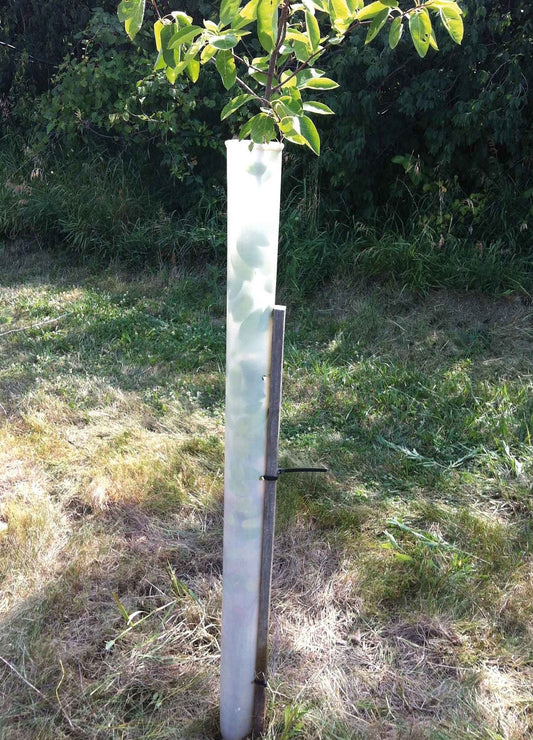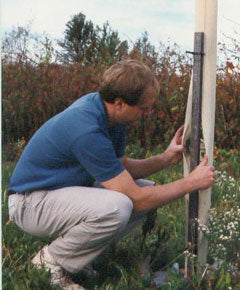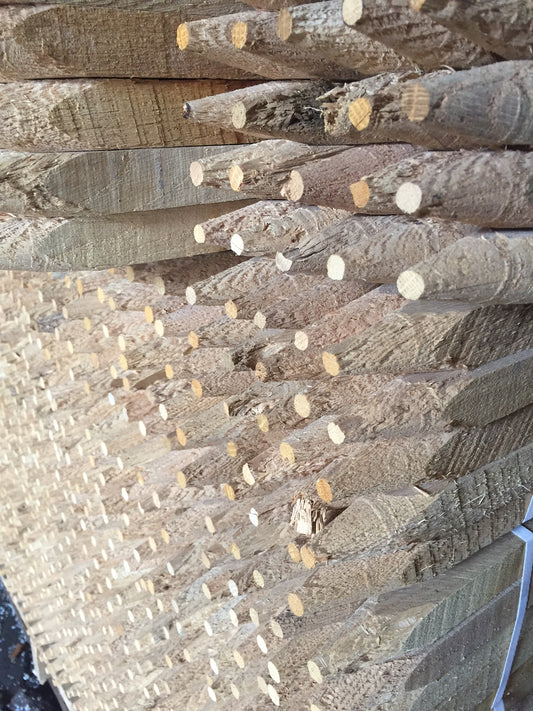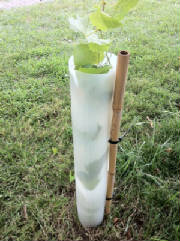Wetlands Mitigation
The success of a Mitigation Project is not based on the number of plants planted; rather, it is based on the number of plants that survive.
The reputation of Mitigation Banking companies is largely based on the same criterion. Not making full use of proven tools and techniques to protect and nourish plants is to throw caution to the wind.
Some of the largest tree planting projects in the last few years fall under the “Wetlands Mitigation Banking” system, which provides for the establishment of wetlands to compensate for wetlands that are converted to other uses. A typical example is the development of shopping malls on wetlands. To compensate for the removal of those wetlands, Federal regulations require the restoration of wetlands elsewhere.
Such efforts often require the planting of vast numbers of trees. The type and often the size of trees are specified by the regulating agency. (Note: Regardless of the originating agency, the Army Corps of Engineers must also sign off on the project.)
Sometimes, the project also entails the removal of “junk” trees and the planting of more valuable species and varieties. Because of more extensive, denser root systems, trees have a greater stabilizing effect on soil, especially in wetlands.
Moreover, the inclusion of a variety of tree species fulfills the goal of creating a diverse natural habitat. Trees themselves encourage the proliferation of the types of plants that do not thrive in full sunlight, thus further diversifying the flora beneath their canopy.
PROTECTING TREES
Because of the additional time, effort and utilization of resources required to restore wetlands in general and to plant trees in particular, the installation of tree protectors is strongly recommended.
Deer and other animals inflict damage on and destroy hundreds of thousands of newly planted seedlings each year. While many of these trees cost less than a dollar, the labor, overhead and time costs can be very high. Replacing dead trees without adequate protection is just asking for more trouble. For these reasons, an ever-increasing number of planters insist on TREE PRO protectors.
SAWGRASS BAYOU MITIGATION AREA: Louisiana
Blind River Properties owns and manages 32,000 acres of swampland, of which nearly 2100 acres have been designated as a mitigation area for developers and other permittees needing wetlands credits.
They have planted thousands of bald cypress on their property, in areas only a duck hunter would love. According to Dale Martin, Blind River Properties President, their success rate was pretty low until they started using Miracle Tube shelters to protect the trees.
“The problem, according to Mr. Martin, “was that Nutrias* were ravaging the trees within days of their being planted. Survival rate over time was basically nil. No matter what we tried, the nutria eventually found the tree and destroyed it.”
Blind River presented the problem to TREE PRO designers, who came up with a protector design that not only solved the Nutria problem, it also solved problems created by other protectors because of poor design.
TREE PRO developed a shelter with just the right blend of color density and translucence. Called Miracle Tube, this shelter is available in vented or unvented form. Vented protectors are preferred in wet environments because they reduce and can totally eliminate mildew, mold, algae and wet rot. Unvented protectors tend to trap water and drown trees. Vented shelters allow air to flow freely into the protector and around the tree.
“With the installation of several hundred thousand Miracle Tube tree protectors,” Mr. Martin says, “the project survival rate has improved dramatically and replanting costs were cut by a significant amount.”
Wetlands Mitigation and Tree Pro, providing the Miracle Tube tree protector.
*The Nutria (also called the coypu) is a large, semi-aquatic South American rodent. It was introduced to the USA, Asia, and Europe for its fur. It now lives in swamps, in marshes, and near lakes, streams, and rivers, digging burrows near water in rainforests, temperate forests, and grasslands. The nutria is nocturnal, remaining in its burrow during the day. The nutria's life span is about 6 years. Nutrias range up to about 3 ft (0.9 m) long and weigh up to about 35 pounds (16 kg). They have reddish-brown outer-fur and a soft dense, gray under-fur (the valuable under-fur of this rodent is also called nutria). Webbed toes on the hind feet help this mammal swim. It has a long, cylindrical, sparsely haired tail. The ears are small and the legs are short.
Nutrias are herbivores; they eat fresh-water plants, leaves, stems, roots, bark, and grains. Like all rodents, their two front teeth continue to grow throughout their lives, and the nutria must gnaw and chew to wear these teeth down. The state of Louisiana has placed a bounty on nutria because of the devastation they have caused to wetlands.
MONASTERY PROJECT: Georgia
Berry Edwards, president and founder of WARD EDWARDS, Inc. was with Law Engineering & Environmental Services in 1996 when they bid on and won this mitigation bank project.
“We knew going in that this would be a tough, problematic project. Not all mitigation sites are created equal and this one was near the bottom in terms of the lengths we needed to go to to be successful.”
The project called for the planting of 25,000 bare-root trees, much of it under an established canopy. The contractors’ first task was to remove thousands of non-native shrubs and undesirable trees.
“Having previously had some challenging experiences with another company’s tubes,” Mr. Edwards said, “we were committed to doing this job right from the beginning. The contractor’s job of planting was tough enough without the prospect of having to do it over.”
Even though installing Tree Pro protectors raised initial costs and labor, in the long run it saved the company a significant amount of time and money. As a result, their overall costs as well as customer satisfaction improved.
To date the tree survival rate for the Monastery Project is 75 percent. Although WARD EDWARDS normally gets 90 percent survival with the Tree Pro tubes, given the challenges of this installation, Mr. Edwards thinks 75 percent is quite satisfactory.
COVENANT TRANSPORT PROJECT: Chattanooga, TN
In 1997 a contractor working with Law Engineering planted 640 B&B trees, averaging two inches in diameter as part of a wetland mitigation and riparian stream restoration project. The purpose was to jump start the succession process and establish critical stream canopy cover as well as promote the growth of some better species to the area.
Shortly after initiating the planting of the trees, it became apparent that the project was attracting the unwanted attention of the beavers in the area. By adding the Tree Pro protectors, our beaver problems were quickly eliminated. Says Mr. Edwards, “To achieve a better survival and growth rate, spending more time and money initially is well worth the effort.”
Tree Pro Tree Survival Products
-
Miracle Tube Tree Grow Tube
Regular price From $6.50Regular priceUnit price / per -
Tree Pro Tree Protector
Regular price From $6.50Regular priceUnit price / per -
Tree Support Stake
Regular price From $11.00Regular priceUnit price / per -
Vine Pro Vineyard Grow Tube
Regular price From $8.25Regular priceUnit price / per




